Ishigaki is an idyllic island located in the southern part of Japan, where the tropical climate and lush vegetation make it a popular spot for bird watching.
Ishigaki and the surrounding islands are home to over 100 species of birds, many of which are unique to the region. From the beautiful white-tailed eagles to the colourful kingfishers, these birds offer a diverse and captivating experience for bird enthusiasts and nature lovers alike.
Whether you’re an experienced bird watcher or a casual observer, Ishigaki’s avian inhabitants are sure to leave you amazed and captivated.
1. White-Breasted Waterhen
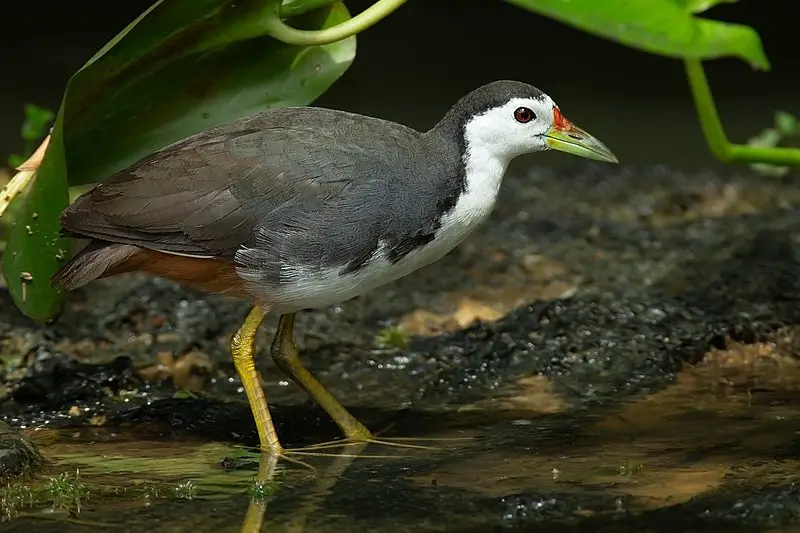
The White-breasted Waterhen is a stunning species of bird from South and Southeast Asia. It has a striking appearance, with its dark slaty plumage contrasted by the clean white of its face, breast and belly.
This bold waterbird can often be seen slowly walking around marshes or even drains near busy roads with its tail held upright in an unmistakable pose.
They are omnivores which feed on both plants and small animals such as insects and invertebrates.
The White-breasted Waterhen plays an important role in their ecosystems as they help to keep it balanced by consuming pests that could potentially cause damage to crops or other plant life if left unchecked.Scientific classification:
| Kingdom | Animalia |
| Phylum | Chordata |
| Class | Aves |
| Order | Gruiformes |
| Family | Rallidae |
| Genus | Amaurornis |
| Species | A. phoenicurus |
Also Featured In: Most Common Types of Bangladeshi Birds, Hong Kong Birds You Need to See
2. Ruddy Kingfisher
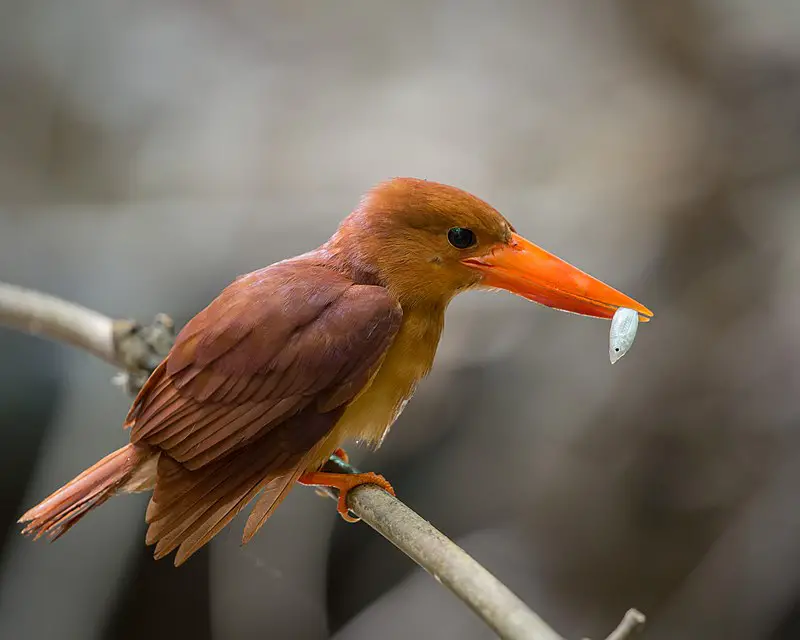
The Ruddy kingfisher is a beautiful species of bird found in east and southeast Asia. It measures up to 25 cm long, with bright red bill and legs that contrast against its rust-red body which deepens into purple at the tail.
There isn’t much sexual dimorphism between male and female birds, although some sources report males being brighter plumage than females.
These birds usually inhabit coastal mangrove forests or riverine habitats where they feed on aquatic insects like dragonflies as well as small fish.
They are typically solitary but may form pairs during breeding season when their loud calls can be heard from afar.Scientific classification:
| Kingdom | Animalia |
| Phylum | Chordata |
| Class | Aves |
| Order | Coraciiformes |
| Family | Alcedinidae |
| Subfamily | Halcyoninae |
| Genus | Halcyon |
| Species | H. coromanda |
3. Great Crested Grebe
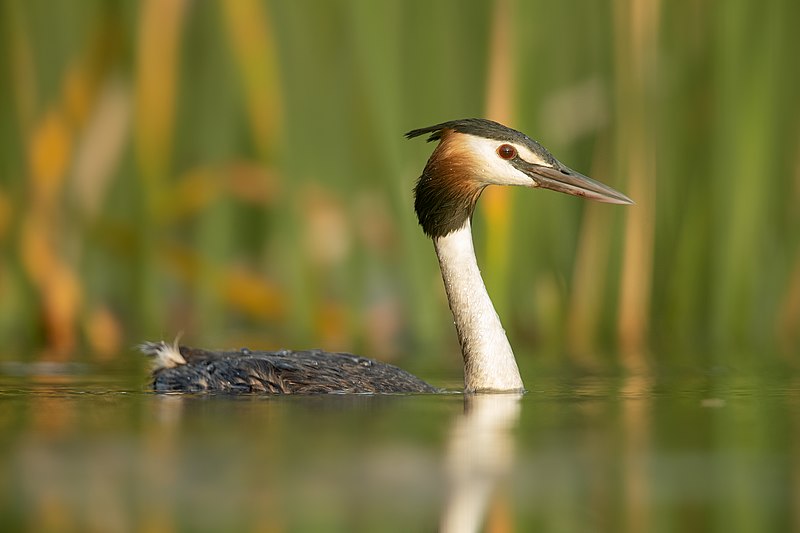
The great crested grebe is a beautiful water bird belonging to the grebe family. It is easily identified by its striking head crest, which it displays during mating rituals.
Originally classified in 1758 by Carl Linnaeus as Colymbus cristatus, this species has since become the type example for all other members of its genus Podiceps.
Great crested grebes are known for their intricate courtship behavior such as synchronized swimming and “head-shaking” motions used to attract mates.
They also possess unique features like red eyes and lobed feet that help them swim efficiently underwater when hunting for food.
The great crested grebe can be found throughout much of Europe, Asia, Africa and Australasia where they inhabit freshwater wetlands or shallow lakeshores with plenty of vegetation nearby to hide from predators while nestingScientific classification:
| Kingdom | Animalia |
| Phylum | Chordata |
| Class | Aves |
| Order | Podicipediformes |
| Family | Podicipedidae |
| Genus | Podiceps |
| Species | P. cristatus |
Also Featured In: Native Birds Of Germany, Belarus Birds You Should Know
4. Crested Serpent Eagle
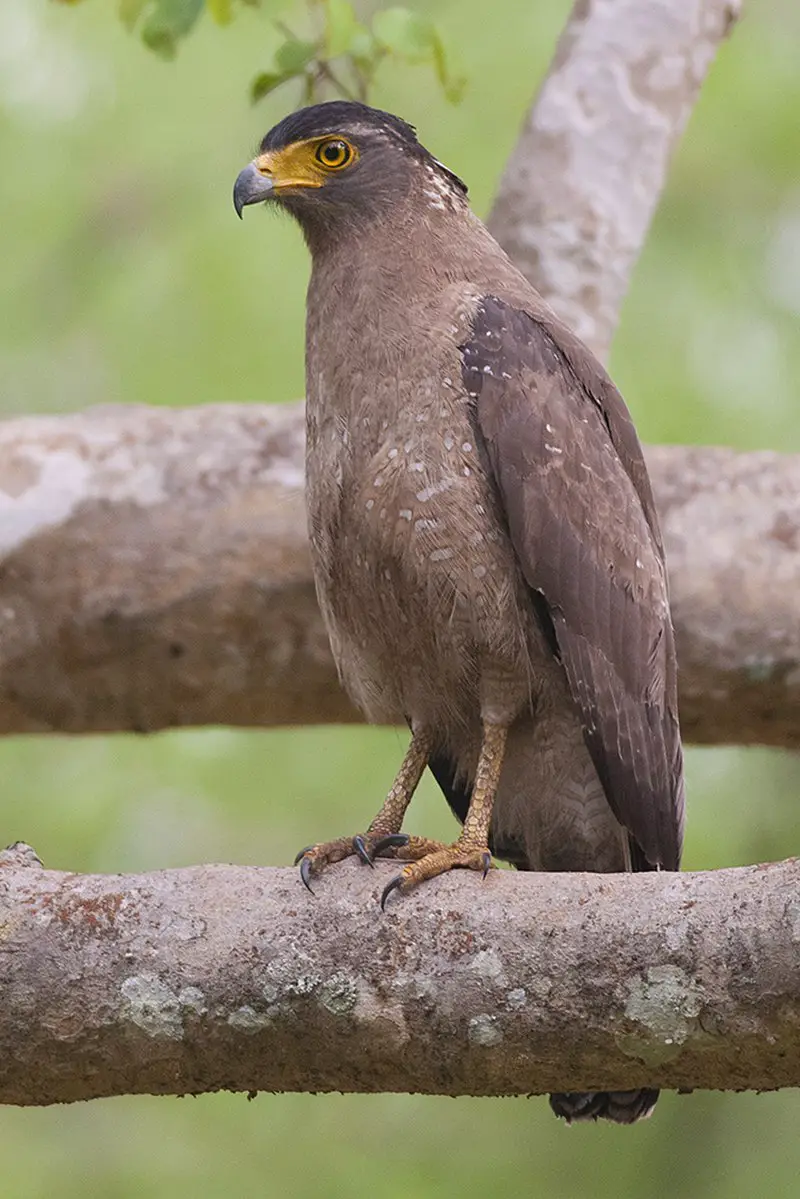
The Crested serpent eagle is a majestic bird of prey found across tropical Asia. With its prominent black and white crest, this medium-sized raptor can be seen soaring above forests in search of food.
It has an extensive range which includes the Indian Subcontinent, Southeast Asia and East Asia; some experts even argue that certain subspecies should be treated as separate species altogether.
This magnificent creature feeds on small animals such as lizards or rodents but will occasionally take larger birds or mammals if it gets the chance.
The Crested serpent eagle remains one of nature’s most impressive creatures to behold.Scientific classification:
| Kingdom | Animalia |
| Phylum | Chordata |
| Class | Aves |
| Order | Accipitriformes |
| Family | Accipitridae |
| Genus | Spilornis |
| Species | S. cheela |
Also Featured In: Birds of Myanmar, Birds that Live in Borneo Island
5. Purple Heron
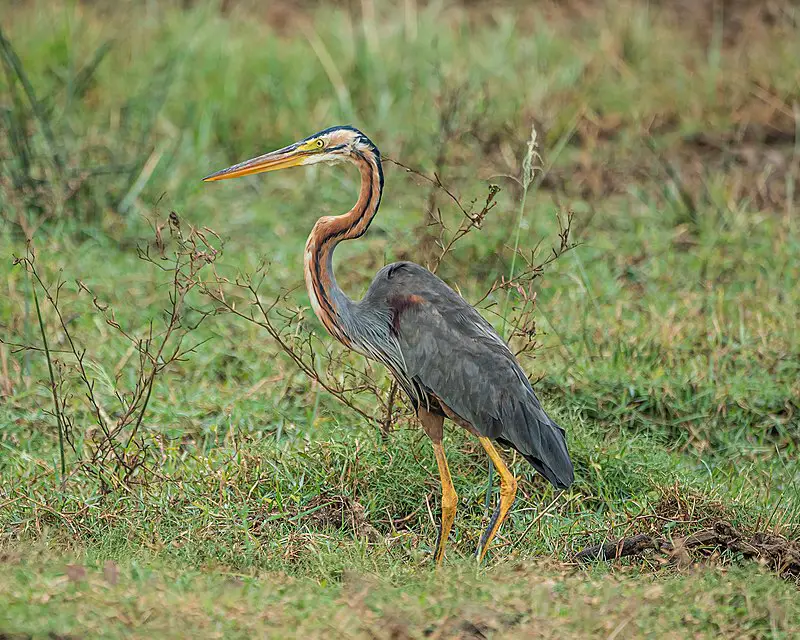
The Purple Heron is a majestic wading bird from the heron family which can be found in Africa, central and southern Europe, as well as southern and eastern Asia.
It has an impressive wingspan of up to 1.2 meters and its plumage usually ranges from grey-blue to purple on its back with brown streaks on it’s chest.
This species breeds during summer months before migrating for winter habitats where they feed mainly on fish or frogs near wetlands or rivers.
The scientific name Ardea purpureus originates from Latin words meaning ‘heron’ and ‘coloured purple’ respectively – referring to this bird’s beautiful colouration.Scientific classification:
| Kingdom | Animalia |
| Phylum | Chordata |
| Class | Aves |
| Order | Pelecaniformes |
| Family | Ardeidae |
| Genus | Ardea |
| Species | A. purpurea |
Also Featured In: Most Beautiful birds of Greece, Ukrainian Birds You Should Know
6. Blue Rock Thrush
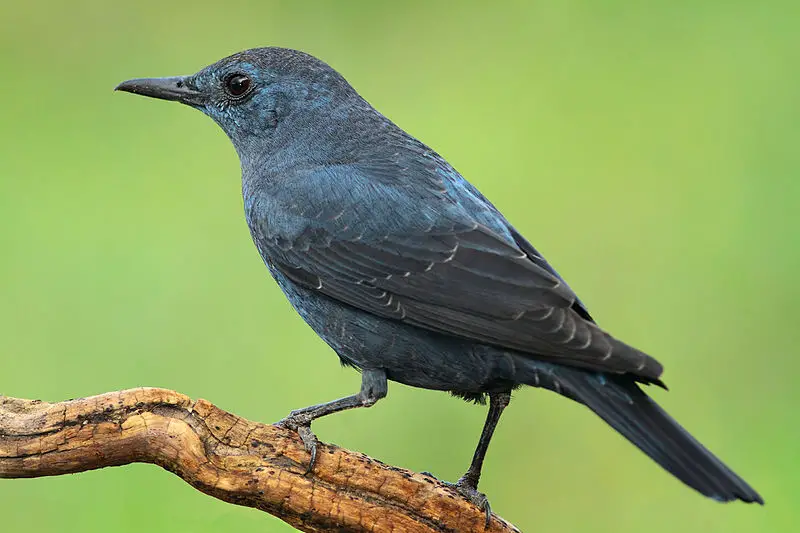
The Blue Rock Thrush is a species of chat that was once placed in the Turdidae family. It resides across many different regions, including southern Europe, northwest Africa, Central Asia and northern China to Malaysia.
This bird has even been adopted as Malta’s national bird; it is called “Merill” there.
The Blue Rock Thrush lives within rocky areas where they can find shelter from predators and build their nests on cliffs or steep slopes with rocks.
They are very agile birds with long wings enabling them to swoop in for prey quickly while also allowing them to fly away rapidly if need be.
Their diet consists mainly of insects but will occasionally eat small fruits and berries when available too.Scientific classification:
| Kingdom | Animalia |
| Phylum | Chordata |
| Class | Aves |
| Order | Passeriformes |
| Family | Muscicapidae |
| Genus | Monticola |
| Species | M. solitarius |
Also Featured In: Malta birds, Birds of Kobe
7. Malayan Night Heron
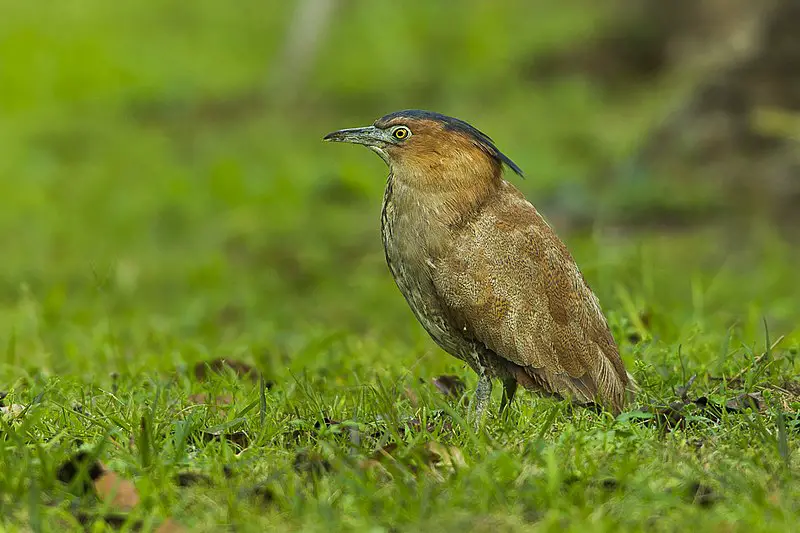
The Malayan night heron is a medium-sized heron found in southern and eastern Asia. It has a distinctive black crest, yellow bill and brownish plumage with white streaks on the neck.
The species can be seen in India, Sri Lanka, Brunei, Nepal, Bangladesh, Myanmar Cambodia Laos Vietnam Thailand Malaysia Singapore China Indonesia Philippines Taiwan Japan.
Being highly migratory it may also turn up at unexpected localities during its long journey between wintering grounds to breeding areas.
They inhabit wetlands such as marshes, lakes riverbanks where they feed primarily on aquatic insects fishes amphibians reptiles small mammals crustaceans mollusks worms larvae etc.
These birds are known for their loud croaking calls which help them locate each other while flying or moving through dense vegetation.Scientific classification:
| Kingdom | Animalia |
| Phylum | Chordata |
| Class | Aves |
| Order | Pelecaniformes |
| Family | Ardeidae |
| Genus | Gorsachius |
| Species | G. melanolophus |
Also Featured In: Herons Species, Most Common Taiwan Birds
8. Grey-Faced Buzzard
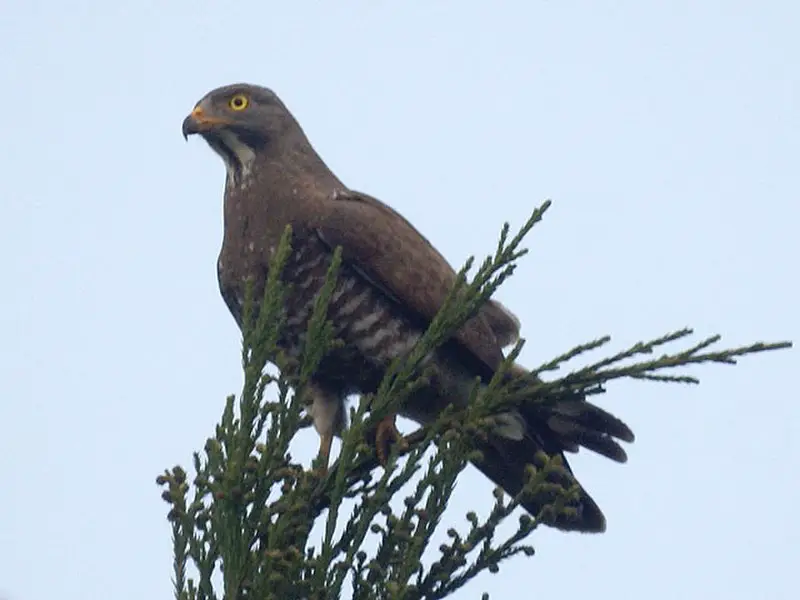
The Grey-faced Buzzard is a small raptor that can be found in Manchuria, Korea, and Japan. It is known for its grey head, neck, and breast, and its white throat.
The adult buzzard also has distinctive black moustaches and mesial stripes, adding to its unique appearance.
This bird of prey feeds on lizards, small mammals, and large insects and can often be seen in open land areas.
During the winter months, the Grey-faced Buzzard can be found in Southeast Asia. Despite its small size, this bird is a formidable predator and an important part of the ecosystem in its native range.Scientific classification:
| Kingdom | Animalia |
| Phylum | Chordata |
| Class | Aves |
| Order | Accipitriformes |
| Family | Accipitridae |
| Genus | Butastur |
| Species | B. indicus |
Also Featured In: Most Common Birds Live in Osaka, Birds of Hyōgo